This Armytek Wizard Pro Nichia 144A was provided by Armytek for review. Try coupon codes "BLF35", "RED", "reddit", or "review", for a discount. Only one can be used per order, and I believe they're in order of best to worst at the time of this post.
I believe I was the first person to put a Nichia 144A in an Armytek Wizard Pro. I suggested the idea to Armytek, and promoted the idea on forums. After a couple years of occasional teasing from them with no visible steps toward making it a reality, I assumed it would never happen. I was thrilled when they shared professionally-produced marketing material for it, suggesting an actual release was imminent, and even more thrilled to receive a pre-production sample. It's fair to say that I'm biased in favor of this light.
Update May 2020: the reliability concerns I express in this review don't appear to have resulted in a high failure rate so far. I am rescinding my warning to not buy this as one's only flashlight/headlamp. I've seen two reports of failures, one of which was effectively DOA, and that's relatively normal for a light that's as popular as this one has been in the enthusiast community.
Concept
The Armytek Wizard Pro is a "multi-flashlight" in Armytek's terminology, powered by an 18650 battery. Everyone else calls that a right-angle flashlight or headlamp. This form factor works equally well as a handheld flashlight or a headlamp, and many of them, the Wizard Pro included have a pocket clip and a magnetic tailcap, allowing them to be used clipped to clothing or magneted to surfaces. Armytek also includes a wristband.
The Wizard Pro has long been Armytek's top model of right-angle light, and the most recent previous version used a Cree XHP50 LED, included a battery, and had USB/magnetic charging. This version replaces the XHP50 with a Nichia 144A with a neutral 4500K color temperature and a color rendering index of 90+ for vivid, accurate, sunlight-like color.
If I could only have one flashlight, it would be a right-angle design powered by an 18650 battery, with a clip and a magnet. It would have a boost driver for stable output, and a high-CRI LED with neutral tint. If that's sounding a lot like the Wizard Pro 144A, you're not mistaken. I'd probably want more throw if it was my only light, but a more diffuse beam pattern is preferable for a lot of use cases.
Design
The Wizard Pro design has evolved over a 7 year period from its 2013 introduction. Over time, its exterior has gained cooling fins, a magnetic tailcap, and charging contacts. Inside, the emitter has gone from Cree XM-L2 to Cree XHP50 to Nichia 144A, and the driver has been updated to handle a larger amount of power.
In its current form, the Wizard Pro is a medium-size 1x18650 right-angle light. It uses thicker material around critical components than many of its competitors. All of the electronics are potted in what I suspect of being a silicone-based rubber. The tailcap has two O-rings protecting the battery tube from water ingress, and requires a large number of turns to remove. The plastic TIR optic is covered by a glass lens to prevent scratches. The physical design seems centered around resisting mechanical abuse, and judging from my two older samples, which have not led easy lives, Armytek has accomplished that goal.
The pocket clip is a loopover design with a very tight friction fit on the battery tube. It's more likely to bend or break than get pulled off the body by accident. It provides a relatively deep carry in either head-up or head-down configurations. The switch is on the side of the head, which is perhaps easier to press in a headlamp configuration than many competitors which place it on top of the head, but harder to find in handheld use. Carried head-up in a right-side front pants pocket, I've had accidental activations with older Wizards pressing into the seam of the pocket, but the switch on this one is a little less proud and I have not seen that issue with this one. Armytek's headband mount has long been my favorite. It's a simple plastic holder, but I find it more comfortable than every alternative I've tried, including the fancy-looking padded one from Olight. It's possible, though not exactly what I think Armytek intended to install the Wizard in the holder with the pocket clip attached, which adds to the convenience. Using the recently-added rubber security loop with the clip installed is a little awkward.
The mode selection ranges from an advertised 0.1 lumens to 1400, with well-chosen spacing. The moonlight mode is noticeably dimmer than any other light I own, and perfect for performing basic tasks in the dark without disturbing others or losing dark adaptation. The user interface consists of three steady groups and one blinking group with shortcuts from off to each of them, and single-click on/off to the last-used mode. There's memory within the mode groups, except that the shortcut from off to low always starts with the lowest. That shortcut has another trick: keep the button held down and it keeps increasing the brightness until released regardless of the groups. In this way, it is always possible to reach any mode without passing a brighter mode, which is useful for comfort and preserving dark adaptation. One feature previous versions had is missing: the ability to set the light to momentary operation, where the button's only function is to activate the light in the last-used mode. It's not included in the manual, so I believe the removal was intentional. I've never read complaints about its presence, so I'm not sure why Armytek removed it. On the other hand, I never used it and don't miss it. While there are more sophisticated UIs available in 2020, I find this UI has aged well and doesn't lack any important functionality.
Execution
The build quality of the exterior of the Wizard Pro 144A is similar to previous Armytek products I've encountered, which is to say solid and industrial feeling. It looks and feels like a professional tool designed purely for function, with little attention given to aesthetics or consumer appeal, except for silver writing on the body. That's slightly reduced from previous versions. No tool marks can be seen through the thick, chalky anodizing.
The optic and emitter work well together, producing an floody beam without a distinct hotspot, but a gradient that's more intense toward the center. The light itself looks like early-afternoon sunlight and makes colors look vivid and natural. The Wizard is quite efficient in medium and medium-high modes. The highest mode comes with a cost, as they usually do, but so do the lowest modes. It's hard for manufacturers to get low modes right; at least there's a proper sub-lumen moonlight with no flicker.
The magnetic charging feature is potentially useful, but it's very slow. It took 10 hours to fully charge a 3100 mAh Acebeam protected cell from empty. The onboard charging does reset tripped protection, but will also charge a cell from under the safe minimum of 2.5V. It's safest to use the onboard charging with cells in a known state of charge.
Along with the removal of momentary mentioned above, which appears to be intentional, there are other firmware differences from previous models which are contrary to the documentation and must be considered bugs:
- The low-voltage protection doesn't work correctly and can drain a battery to 0.6 volts. In combination with the included battery and the boost driver's effectiveness at maintaining output, this presents a significant risk of a battery fire or explosion when the battery is recharged and used again. This bug has been confirmed fixed by several customers who ordered from Armytek directly, but at least one dealer has delivered buggy units to customers.
- The thermal regulation steps down to the main3 level and stays there upon hitting a temperature threshold. Output does not increase when the light cools like the manual says it will, and like previous versions did.
- Tightening or loosening the tailcap with the button held down as if to toggle the indicator light or the momentary mode from older models can put the Wizard into an undocumented state in which the light toggles on/off with multi-click shortcuts without changing modes. There's one report of an apparent hardware malfunction that permanently disables the light after entering this state. A similar sequence will exit the undocumented state, but I haven't been able to find a repeatable set of steps yet. I did try using strobe afterward as in the linked report, and there were no unusual effects.
If the Wizard needed changes to its firmware, removing the momentary mode was not one many users were requesting. That such a change introduced bugs like these, which made it to production suggests a shocking level of incompetence or negligence in Armytek's firmware development department. The LVP bug in particular was dangerous given how quickly the boost driver can over-discharge a battery, the manual claiming the Wizard has LVP, the included battery being unprotected, and the fact that the Wizard is worn on the user's head.
I will, however assume for the moment that the one incident of hardware failure isn't related to the firmware bugs. With the LVP bug fixed, the other two are a feature downgrade, and a minor inconvenience. They don't ruin the Wizard Pro 144A for me, and probably won't ruin it for you either.
Finally, I have to bring up the company's customer service track record. Execution doesn't end with the product itself when the product costs $90 and advertises a 10 year warranty. There have been numerous reports of customers having difficulty getting a response from customer service, and long delays in getting warranty service.
Conclusion
If Armytek had simply put the 144A in the Wizard Pro with no other changes, I'd be recommending it to everyone who could afford it, and suggesting that the rest increase their budgets. The right-angle form factor with a magnet is incredibly versatile; the boost driver does a great job producing full output on a low or cold battery; the light produced by the 144A looks like sunlight and renders colors nearly as well. My home-built Wizard Pro 144A has been my most-used light since I built it, and now everyone can simply buy one.
~~Unfortunately, it's not so simple. The firmware bugs introduced with this model are a significant concern even though the LVP is fixed. It's not clear if the undocumented UI state can lead to hardware damage or a "soft-brick" condition where the UI cannot be restored to its normal state. I'd bring my old Wizards into a situation where light is safety-critical, but for the next year, this one is on probation. Armytek's sometimes-difficult warranty process is also a concern in combination with the potentially-unreliable firmware.~~
Update May 2020: While I'm not thrilled they made the thermal regulation less sophisticated and that the UI has a wierd undocumented state, community experience with this light has been showing average to good reliability.
So, should you get one? ~~If you're very risk-averse, if you can barely justify the cost, or if it will be your only light, no you shouldn't.~~ Yes. This is perhaps the most useful all-around flashlight on the market. If you're risk-averse, buy it from a trustworthy local dealer who can handle any warranty issues for you.
For everyone else, probably yes. It's that useful, and this LED is beautiful.
Highlights
- High CRI
- Very nice tint
- Versatile form factor
- Boost driver provides excellent output stability
- Good efficiency on medium and high modes (other than max)
- Extremely low moonlight - the lowest I can recall seeing
- Versatile user interface, with useful shortcuts
- Tailcap magnet - stronger than most competitors
- Headband is usable with pocket clip installed
Lowlights
- Some samples have been delivered to customers without low-voltage protection, which is dangerous
- Thermal regulation is less sophisticated than documented, or than older Wizards
- The UI has an undocumented state, suggesting a problem in Armytek's firmware development process and the possibility of additional bugs. This has been confirmed in production units with fixed LVP.
- Slow charging
- The company has a poor track record for customer service
Details and technical analysis
Versions
The Wizard Pro 144A only comes one way, but there are other variations of the Wizard Pro using the Cree XHP50. More variations are rumored to be in the works.
Accessories
The Wizard Pro 144A comes with a plastic holder, headband, armband, 3200 mAh battery, USB/magnetic charger, spare O-rings, and manual.
Modes and user interface
| State | Action | Result |
|---|---|---|
| Off | Single click | Memorized mode |
| On | Single click | Off |
| Off/turbo/blinky | Double click | Last-used main mode |
| Main (medium) modes | Double click | Last-used firefly mode |
| Any | Triple click | Last-used turbo mode |
| Any | Quad click | Last-used blinky mode |
| Off | Hold | Cycle through modes starting with firefly1 (turbo2 excluded); loops around |
| On | Hold | Cycle through modes in current group |
Blinky modes include fast strobe, slow blink at high output, and slow blink at medium output.
The user interface does not have the "tactical" momentary state Wizards used to. Attempting to activate it by holding the button down and manipulating the tailcap enters an undocumented state where every click toggles on/off and the shortcuts do not work. Repeating that action exits this state, though sometimes it has required more than one attempt.
The switch indicator light can be set to blink even with the light off by loosening the tailcap, holding the switch, and tightening the tailcap. The inverse of that sequences disables it. Attempting this may enter the undocumented UI state.
Output, runtime, and efficiency
Advertised performance is presumably with the included Armytek unprotected 3200 mAh 18650 battery, which is known to be an LG MH1 cell. All testing was performed with an Acebeam protected 3100 mAh 18650 battery, which is believed to use a Sony VTC6 cell.
| Mode | Advertised Lumens | Estimated Lumens | Percent of claim | Advertised throw (FL1 meters) | Estimated throw (FL1 meters) | Percent of claim |
|---|---|---|---|---|---|---|
| Firefly1 | 0.1 | - | - | 1 | - | - |
| Firefly2 | 1.2 | - | - | 3 | - | - |
| Firefly3 | 5 | 4 | 80 | 6 | 6 | 100 |
| Main1 | 27 | 38 | 140 | 13 | 18 | 131 |
| Main2 | 140 | 168 | 120 | 31 | 37 | 121 |
| Main3 | 335 | 390 | 116 | 47 | 57 | 120 |
| Turbo1 | 770 | 872 | 113 | 72 | 85 | 118 |
| Turbo2 | 1400 | 1600 | 114 | 97 | 115 | 119 |
Where a graph is present, runtimes and efficiency are based on data logged during a runtime test. Otherwise, runtime is predicted from power consumption with a full battery, and is likely optimistic since current will increase as the battery drains in a boost driver light. Battery capacity used to compute efficiency is taken from this test, using the closest match for current.
| Mode | Estimated lumens | Graph | Advertised Runtime | Time to 80% | Time to 50% | Time to 10% | Tailcap current (mA) | Efficiency (lm/W) |
|---|---|---|---|---|---|---|---|---|
| Standby | - | - | - | - | - | ~52 years | 6.6 uA | - |
| Firefly1 | - | - | 200 days | - | - | ~169 days | 0.74 | - |
| Firefly2 | - | - | 40 days | - | - | ~36 days | 3.49 | - |
| Firefly3 | 4 | - | 8 days | - | - | ~11 days | 11.5 | ~83 |
| Main1 | 38 | - | 50 hours | - | - | ~38 hours | 78 | ~116 |
| Main2 | 168 | graph | 10 hours | 8 hours | 8 hours | 8 hours | 319 | 125 |
| Main3 | 390 | graph | 250 minutes | 197 minutes | 197 minutes | 197 minutes | 785 | 116 |
| Turbo1 | 872 | graph | 110 minutes | 73 minutes | 74 minutes | 77 minutes | 2100 | 100 |
| Turbo2 | 1600 | graph | 170 minutes | 90 seconds | 90 seconds | 136 minutes | 6500 | 119 |
| Turbo2 (water cooled) | 1600 | graph | 170 minutes | 23 minutes | 26 minutes | 26 minutes | 6500 | 63 |
The advertised runtime, and measured runtime with fan cooling are longer for Turbo2 than Turbo1. That's not a mistake, but a result of the new, less sophisticated thermal behavior. It spends most of its time at approximately 530 lumens. The advertised runtime suggests Armytek expects a stepdown at some point in Turbo1 as well, but fan cooling prevents it, as would using the light in cold, wet, or moderately windy conditions.
The efficiency drop on Turbo2 is considerable and suggests that a driver component is being pushed beyond its design limits. This mode generates heat quickly and is not usable for an extended period of time under realistic conditions. It should be seen as a burst mode to increase throw briefly.
Light quality
The light produced by the 144A is beautiful when focused by Armytek's honeycomb TIR. There's no hotspot, but the beam is brighter in the middle and dimmer toward the edges. The tint is 4500K and neutral to slightly rosy with vivid color rendering. While I've read it doesn't play well with some reflectors, in this optic, the 144A is easily the equal of the 219B for light quality, with significantly more quantity than a single 219B can produce. This is my favorite emitter I've seen on a factory light since the BLF 348.
There is no PWM or flicker on any mode.
The beam measured 2.08 cd/lm, which is very floody, similar to frosted triples.
White wall
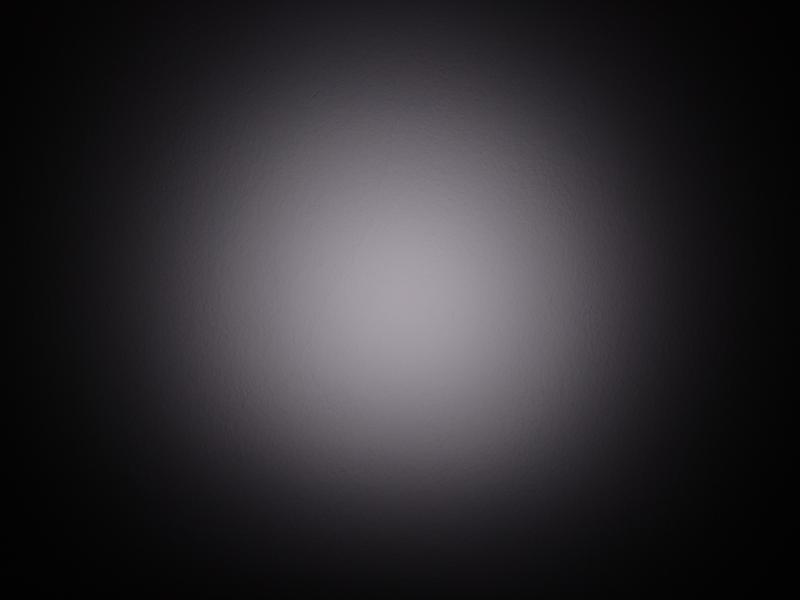
vs BLF 348 219B (right)
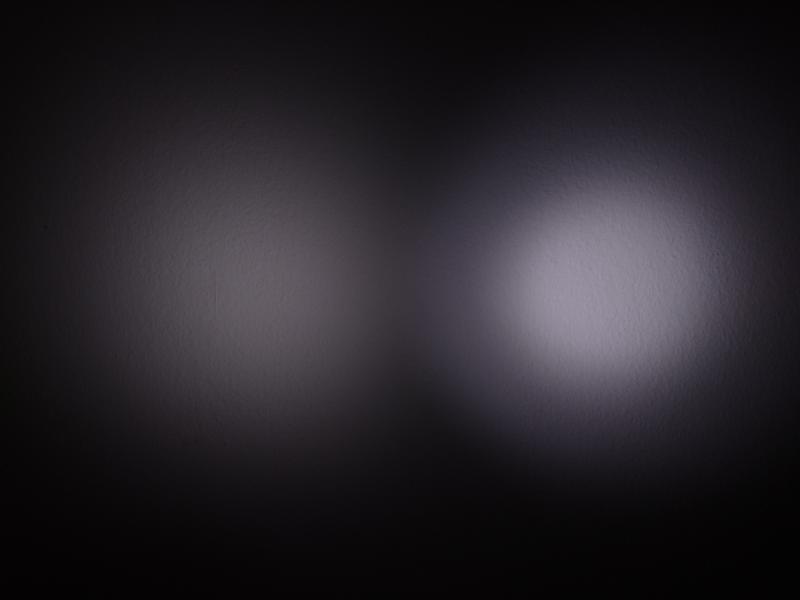
Outdoor
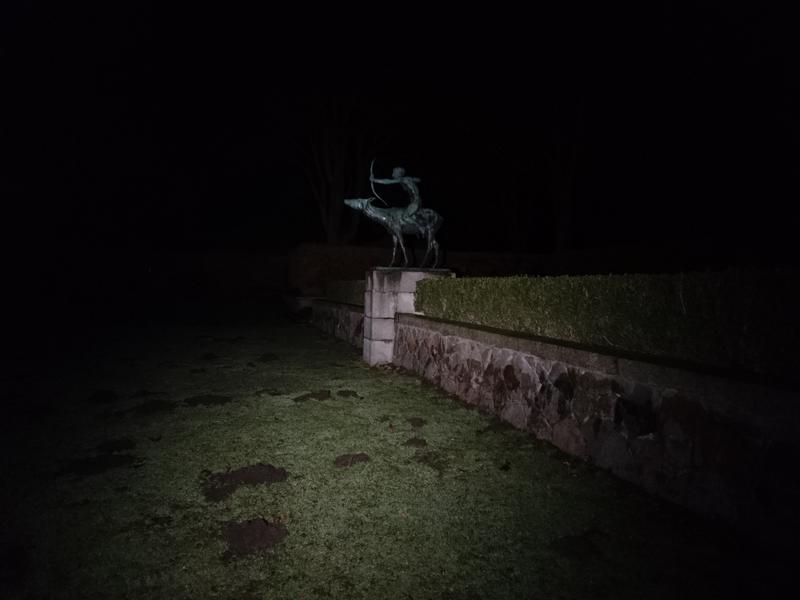
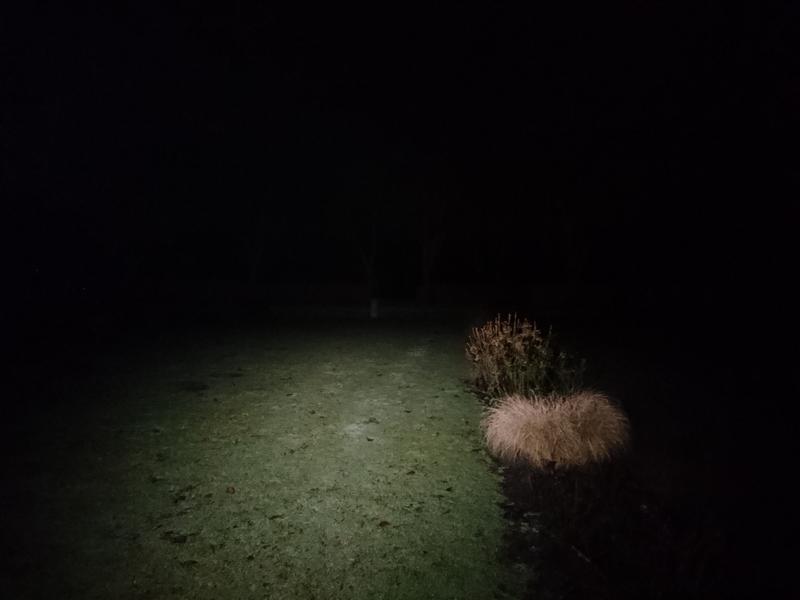
Construction
The Wizard body is heavily built. There are lots of threads on the tailcap, and two O-rings. All the aluminum is a bit thicker than it needs to be. The electronics are known to be potted. Runtime tests conducted under water were no problem. My two older Wizards have survived numerous hard knocks. Put simply, mechanical durability is not a weakness here.
Electronic component assembly on the other hand might be. There have been a few reports of Wizards dying spontaneously, including a recent one involving the 144A model.
Ergonomics
As a handheld, the Wizard Pro works reasonably well. The size allows a person with average hands a four-finger grip without obstructing the light output, and it's easy enough to press the button with either hand: just squeeze the entire head between a thumb and forefinger. There's no texturing explicitly for grip purposes, but the rough anodizing used on all Armytek lights provides a fair amount of grip. Some people dislike the feel, which resembles that of a chalkboard, but I like it.
The headband and holder are also not universally loved. I've tried a number of right-angle headlamps, and I find the Wizard headband to be the most comfortable - better even than the padded Olight headband, which looks more comfortable. Others have found the plastic holder to create hotspots. More objective is the fact that the plastic holder allows much faster installation and removal than the rubber designs used by most manufacturers. It's even possible to install with the pocket clip in place, a convenience all manufacturers should be designing for explicitly.
I have yet to find a good use for the included armband. The Wizard is too large and heavy for me to use comfortably as a wristlight, as the armband isn't very secure and it does not stay in place.
Batteries and charging
The Wizard Pro can use and charge any standard 18650 battery. If protected cells are used, the max mode will require a minimum rating of 8A. A long spring in the tailcap provides reliable contact for anything from the shortest bare flat-top to the longest protected button-top.
Examples with broken LVP firmware should be used with protected cells for safety reasons.
Onboard charging is slow, taking roughly 10 hours to charge a protected Acebeam 3100mAh 18650 from protection-trip. The onboard charging will reset tripped protection. It will also attempt to charge an over-discharged unprotected cell, which is a little risky to do under the best of conditions, and quite inadvisable inside a pressure vessel like the Wizard.
Modification potential
I discussed modifications in my review of the XHP50 model. I put 144As in both samples. The press-fit bezel is the most significant obstacle.
The only modification I'd like to perform on this one is a different firmware. Unfortunately, I don't have one, and attempting to develop one without help from the manufacturer would be a significant undertaking.
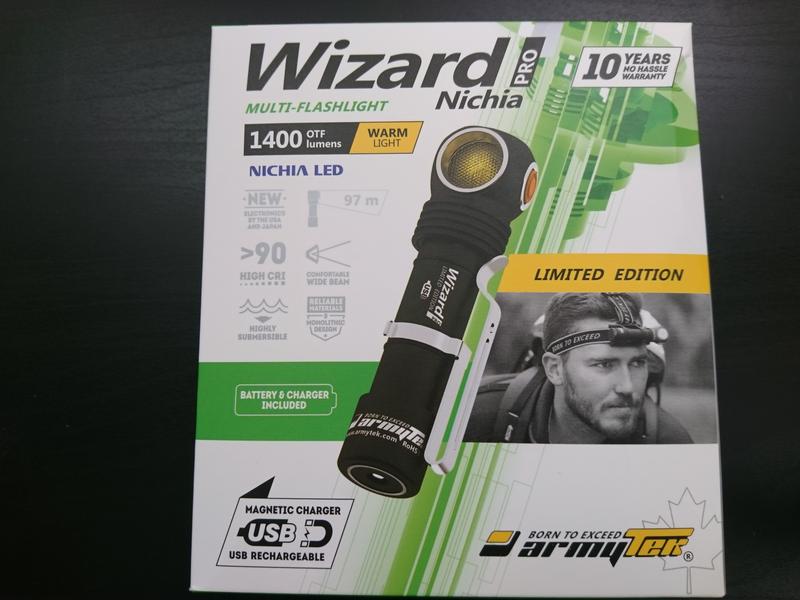
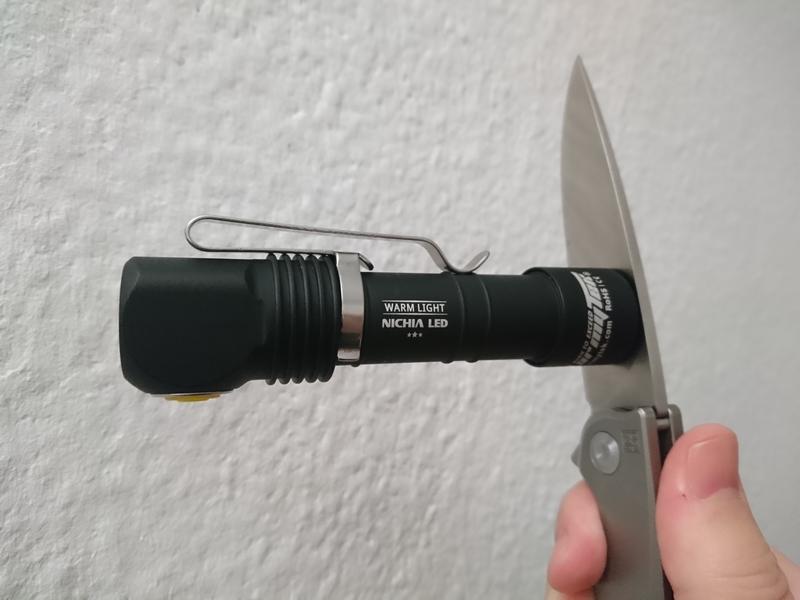
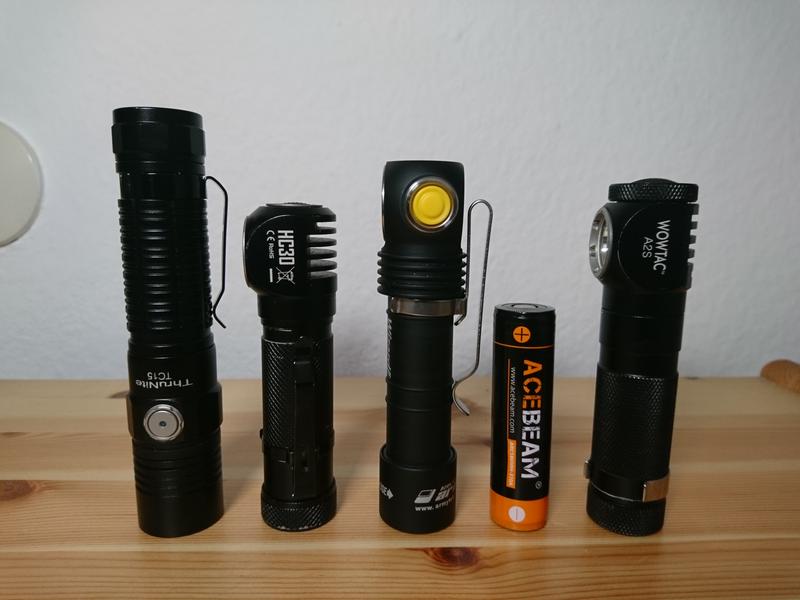
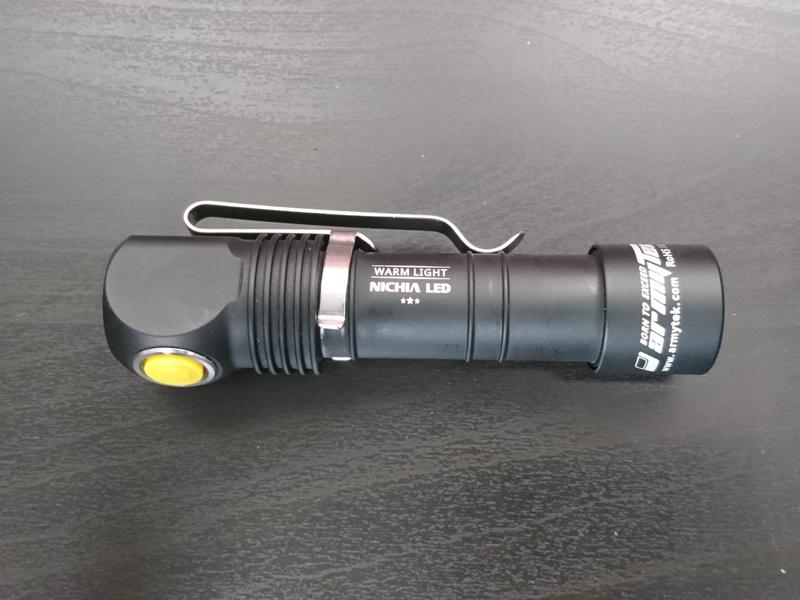
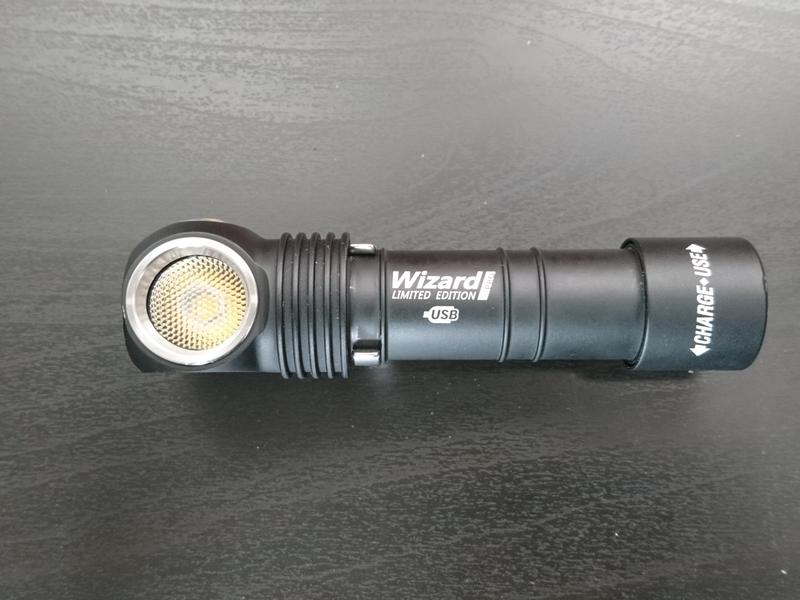
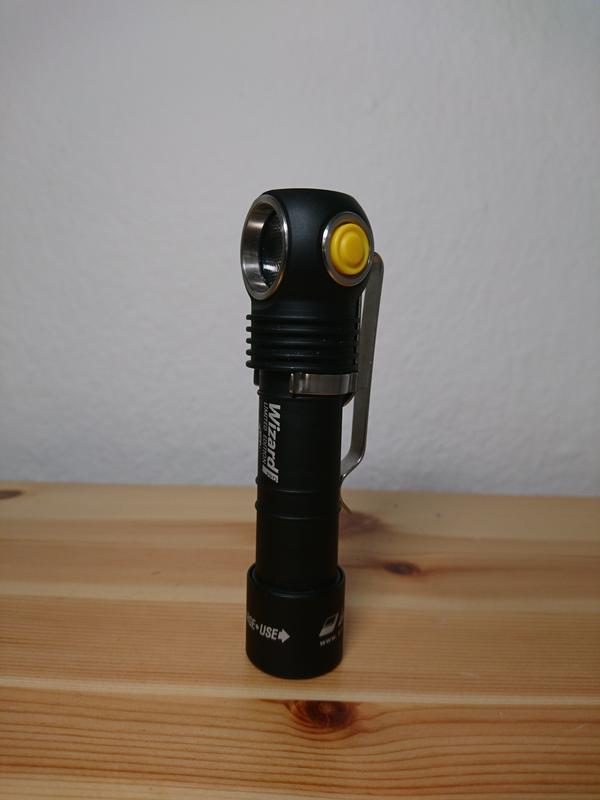
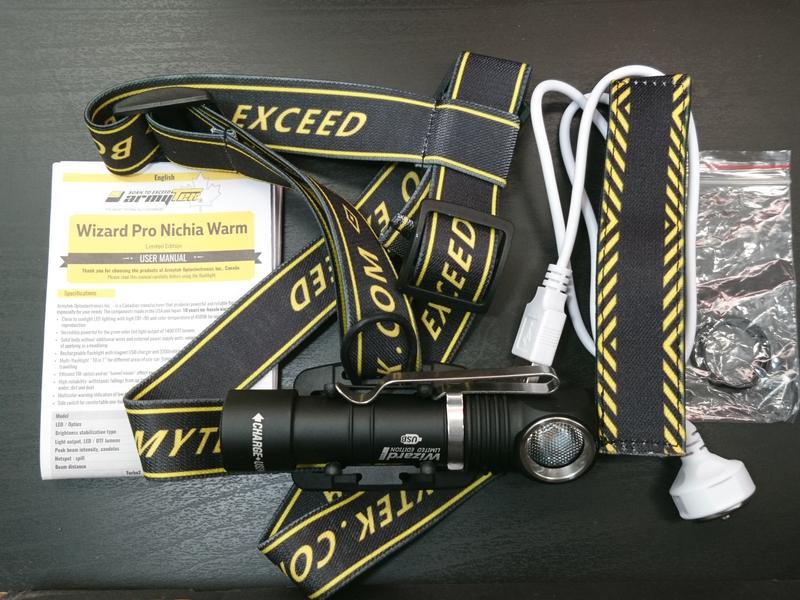
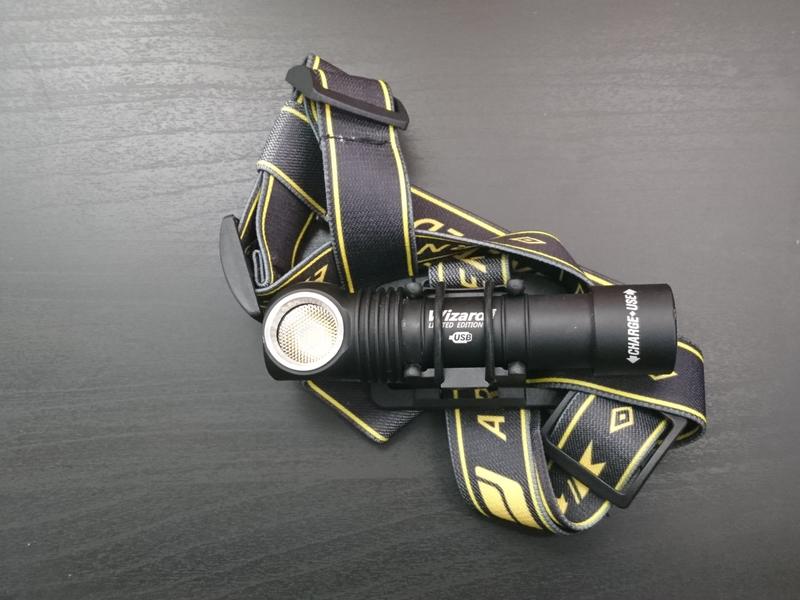
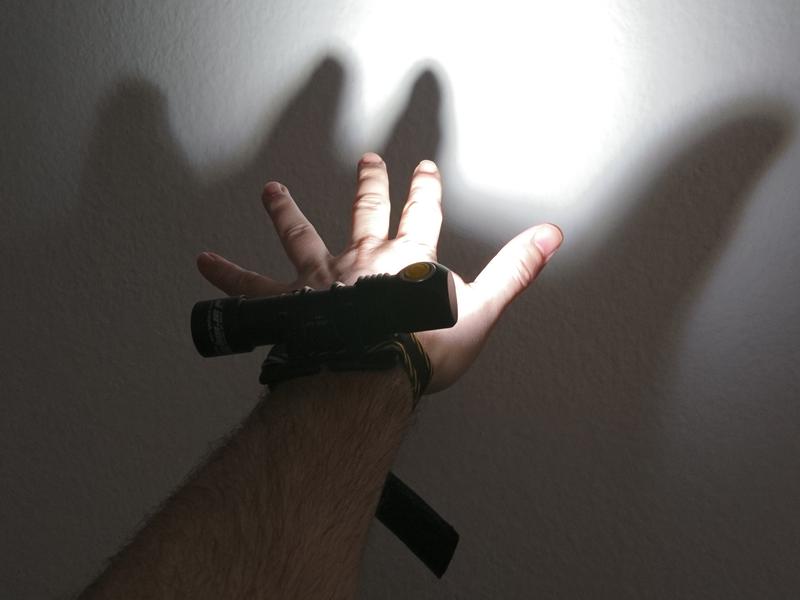
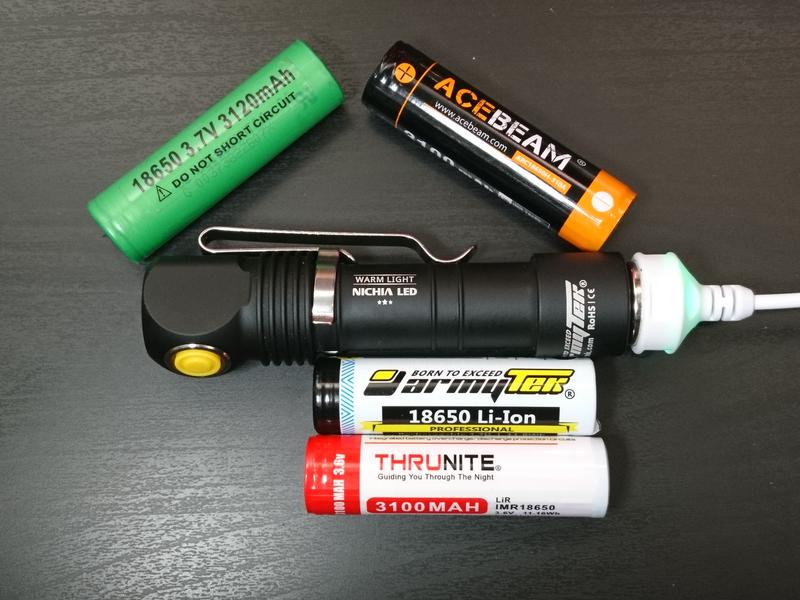
Comments